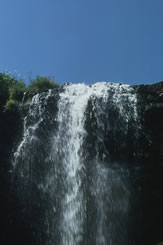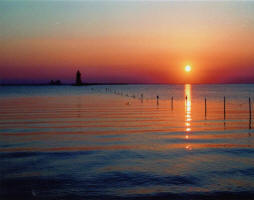 Spain: Combining renewable energy and desalination
Spain: Combining renewable energy and desalination
A report by researchers at the Cartagena Technical University (UPCT) in Spain outlines a desalination process using renewable energy and resulting in lower environmental impacts.
Population and industrial growth have placed a heavy demand on water supplies. Moreover, climate change and population density have brought the topic of water sustainability to the fore. Since the 1960s, Spain has been a global leader in desalination, and remains the largest user in the Western world of such technologies. Today, Spain's more than 700 desalination plants produce 1.6 million cubic metres of water a day - enough to meet the needs of eight million people.
Over the last four decades, Spain has developed the second largest tourist industry in the world. Such growth has necessitated significant development along the country's Mediterranean coast. To meet the water demands of the region's many golf courses and holiday resorts, local authorities have relied heavily on desalination.
However traditional desalination processes can cause environmental damage when brine, which has a higher salt concentration than seawater, is pumped back into the sea. For every litre of water taken from the sea, less than half becomes desalted.
Moreover, a study on the potential impacts of desalination drafted for the European Commission found that in view of Europe's proposed 20-20-20 environmental target, desalination would place a high demand on energy resources at a time when increasing energy efficiency was a priority.
Distillation and vapour compression
The UPC desalination plant would involve both distillation and vapour compression, driven by renewable energy. The system proposed reduces environmental impacts and promises 100 m3 of freshwater an hour. Initially, seawater distillation would use heat provided by solar cells. The resulting saltwater flow would then be fed into a vapour compressor, driven by wind turbines, for final separation of salt and water.
"While the paper stimulated interest, it has not yet led to the construction of such a plant," says one of the report's authors, Antonio Viedma Robles. "Although the Spanish government was interested in the idea at first, this interest has waned somewhat. What we really need is a private or public institution to invest in a pilot plant."
More information:
‘Seawater integrated desalination plant without brine
discharge and powered by renewable energy systems', Desalination 235
(2009):
http://www.sciencedirect.com/science?_ob=MImg&_imagekey=B6TFX-4V476YK-K-1&_cdi=5238&_user=10&_orig=browse&_coverDate=01%2F15%2F2009&_sk=997649998&view=c&wchp=dGLbVzb-zSkWz&md5=2094de858c629b586f937df496b0e9bd&ie=/sdarticle.pdf
‘Potential impacts of desalination development on energy consumption', DG Environment study:
http://ec.europa.eu/environment/water/quantity/pdf/desalination.pdf
Related information on the ETAP website:
‘The desalination technology race':
http://ec.europa.eu/environment/etap/pdfs/desalination.pdf
| Contact information | n/a |
|---|---|
| News type | Inbrief |
| File link |
http://ec.europa.eu/environment/etap/inaction/showcases/spain/449_en.html |
| Source of information | EC DG Environment |
| Keyword(s) | desalination, renewable energy |
| Subject(s) | ANALYSIS AND TESTS , CHARACTERISTICAL PARAMETERS OF WATERS AND SLUDGES , DRINKING WATER AND SANITATION : COMMON PROCESSES OF PURIFICATION AND TREATMENT , ENERGY , INDUSTRY , INFRASTRUCTURES , MEASUREMENTS AND INSTRUMENTATION , METHTODOLOGY - STATISTICS - DECISION AID , PREVENTION AND NUISANCES POLLUTION , SANITATION -STRICT PURIFICATION PROCESSES , SLUDGES , WATER QUALITY |
| Relation | http://www.semide.net/countries/fol135532/country824306 |
| Geographical coverage | Spain |
| News date | 15/12/2009 |
| Working language(s) | ENGLISH |
 you are not logged in
you are not logged in





